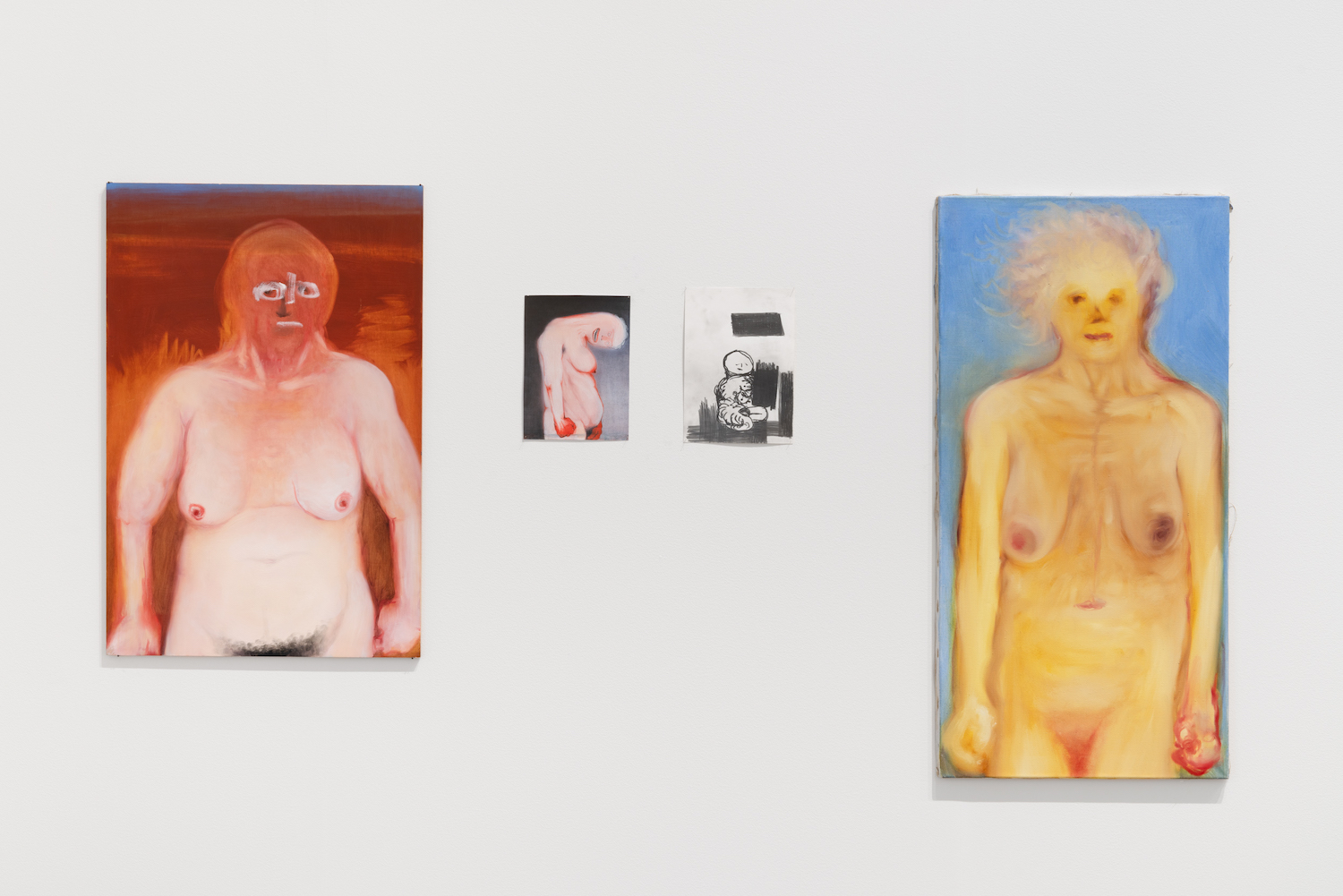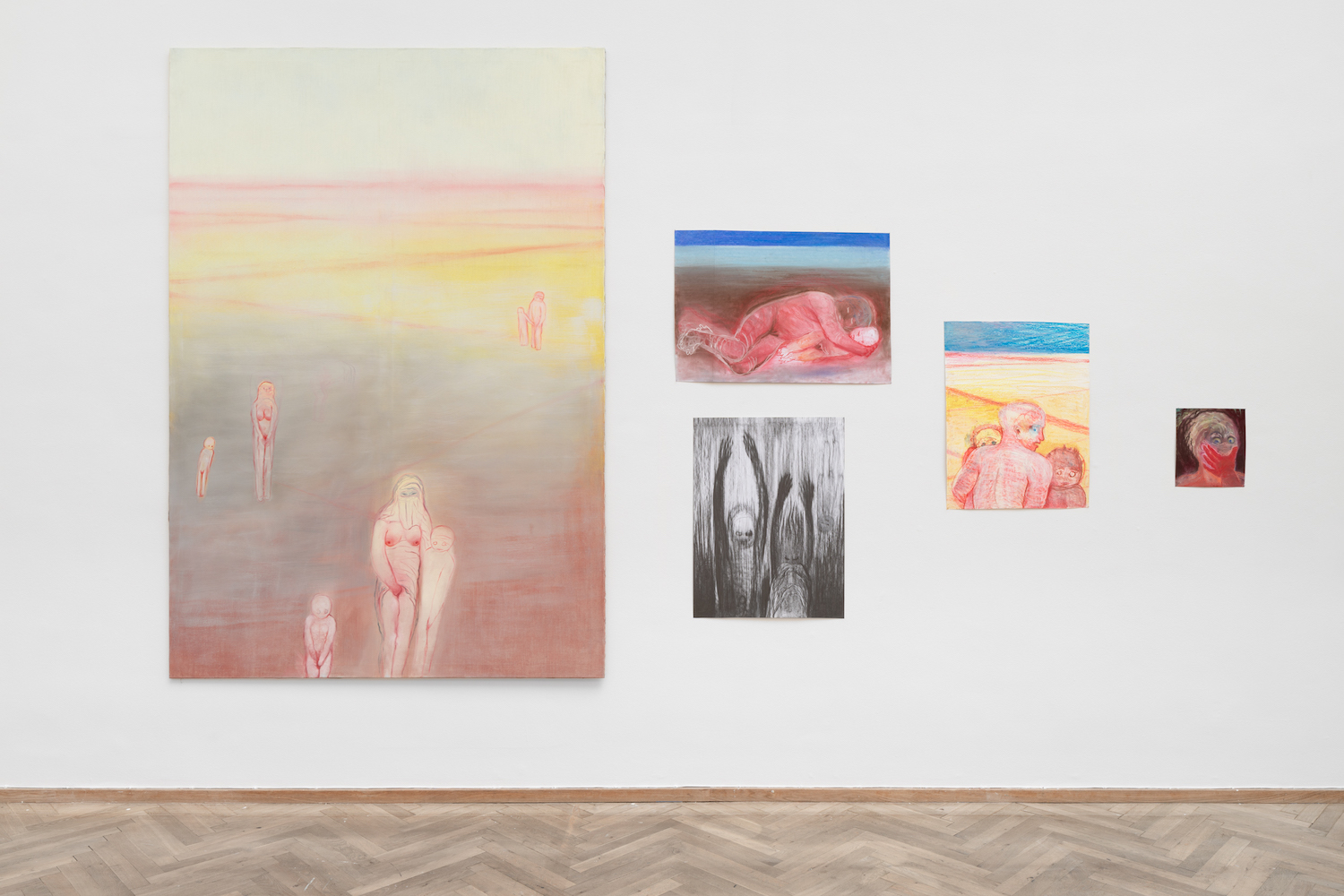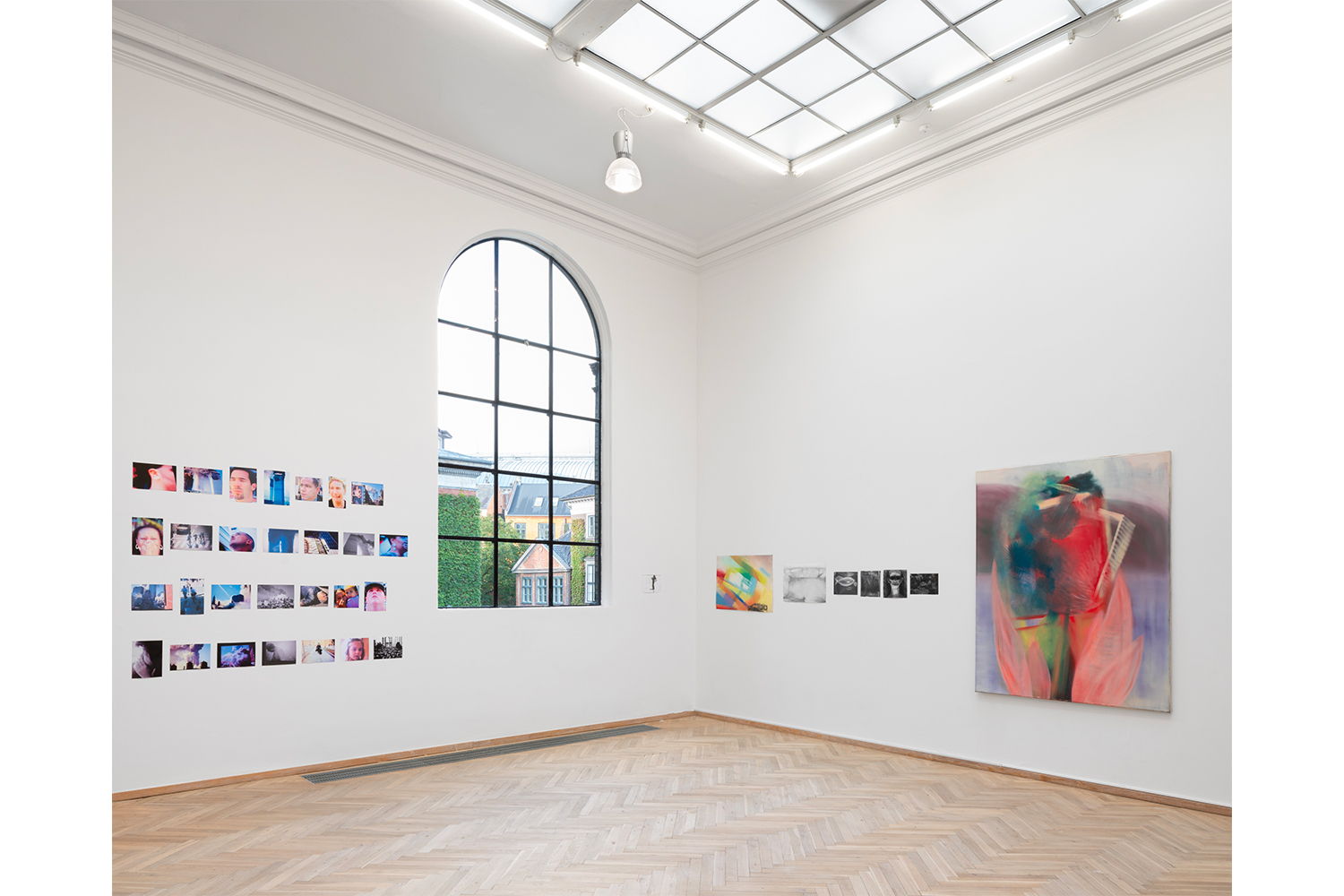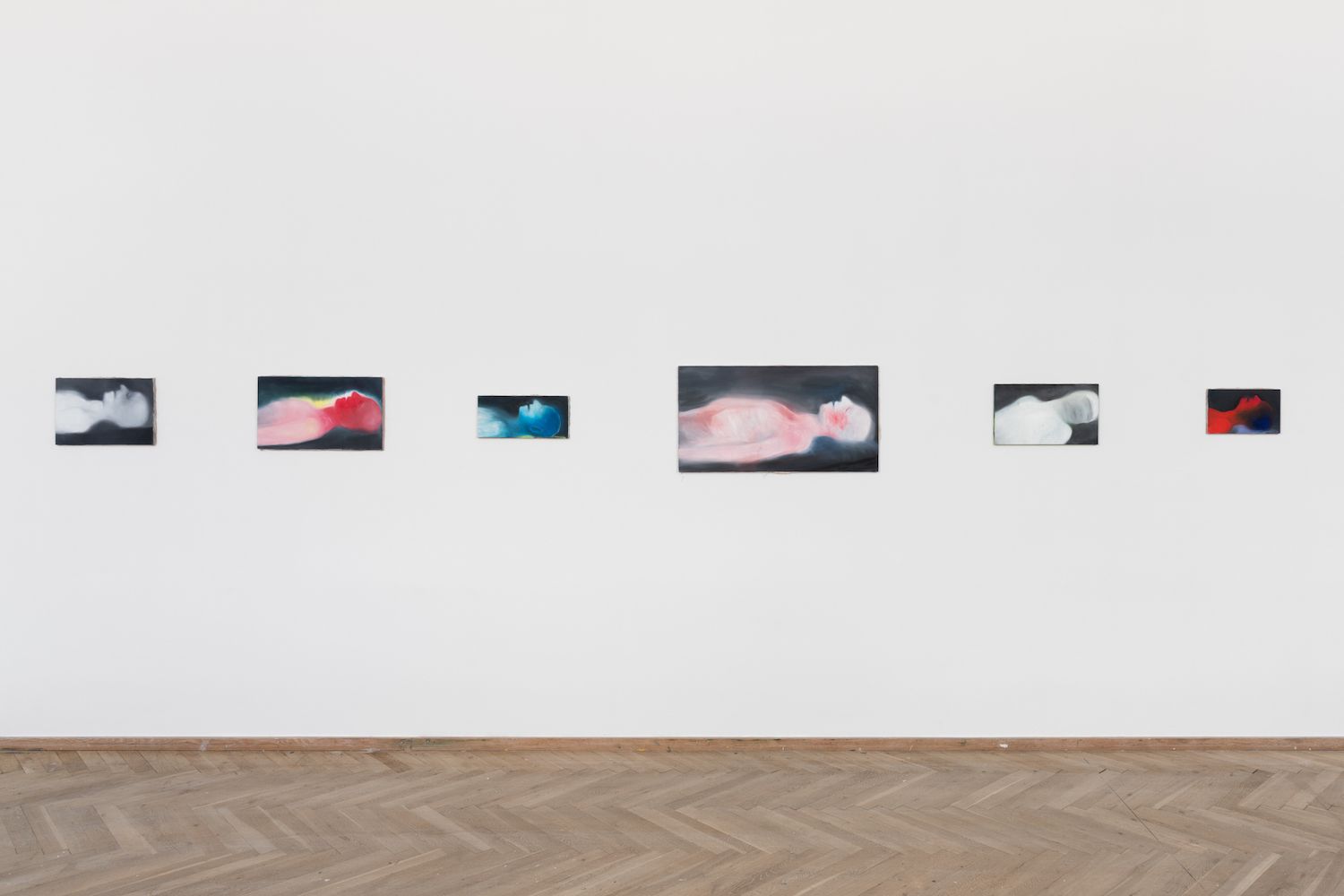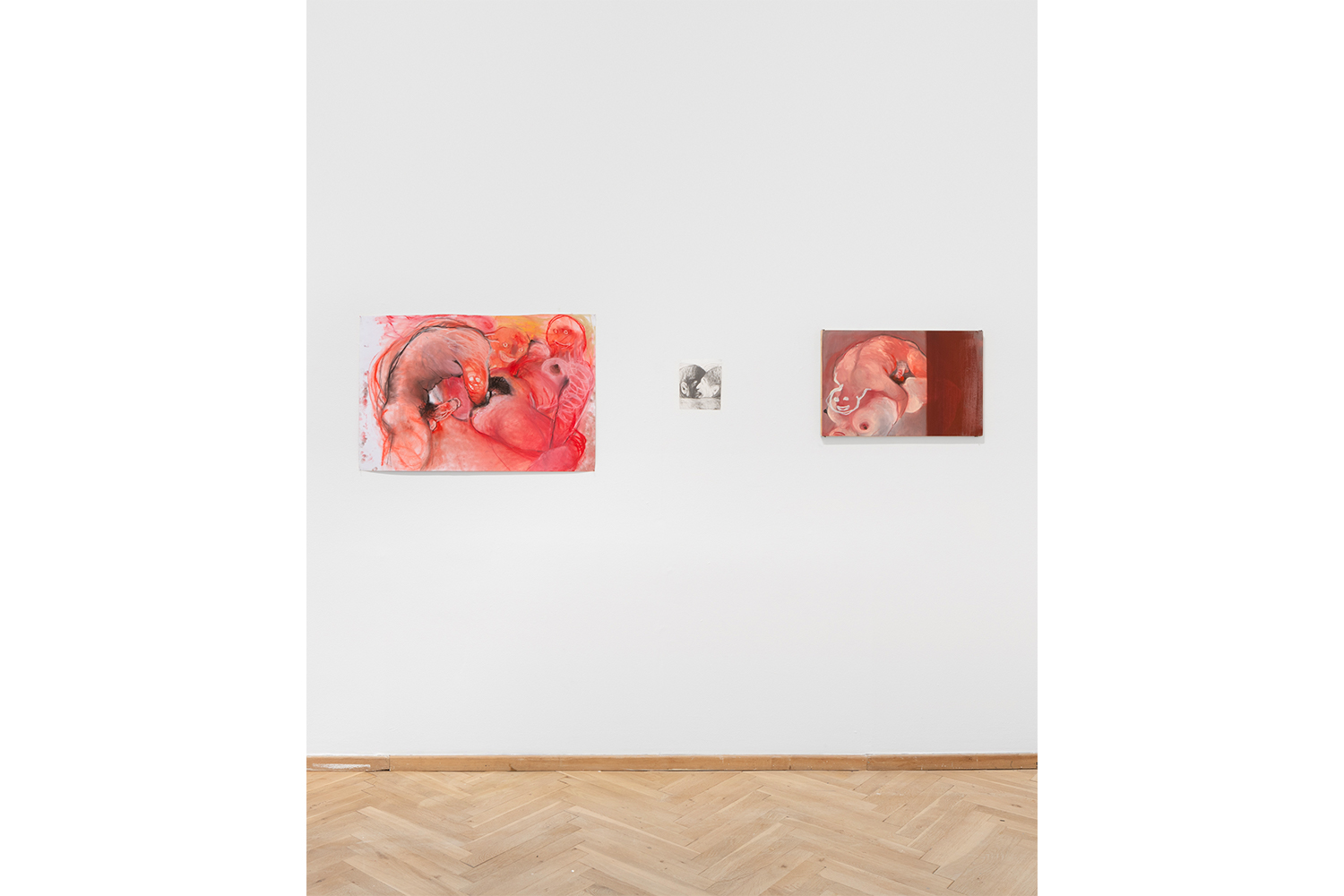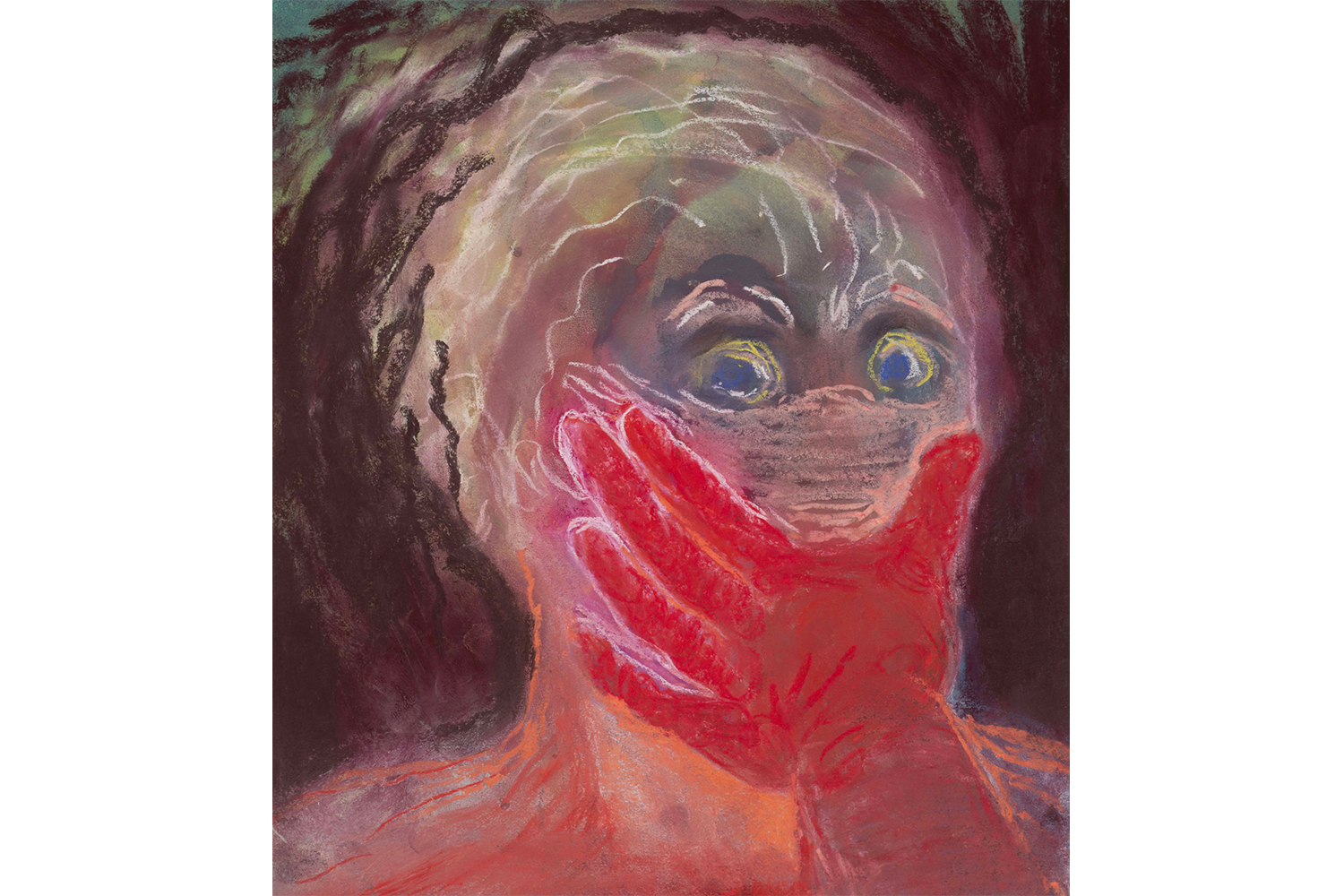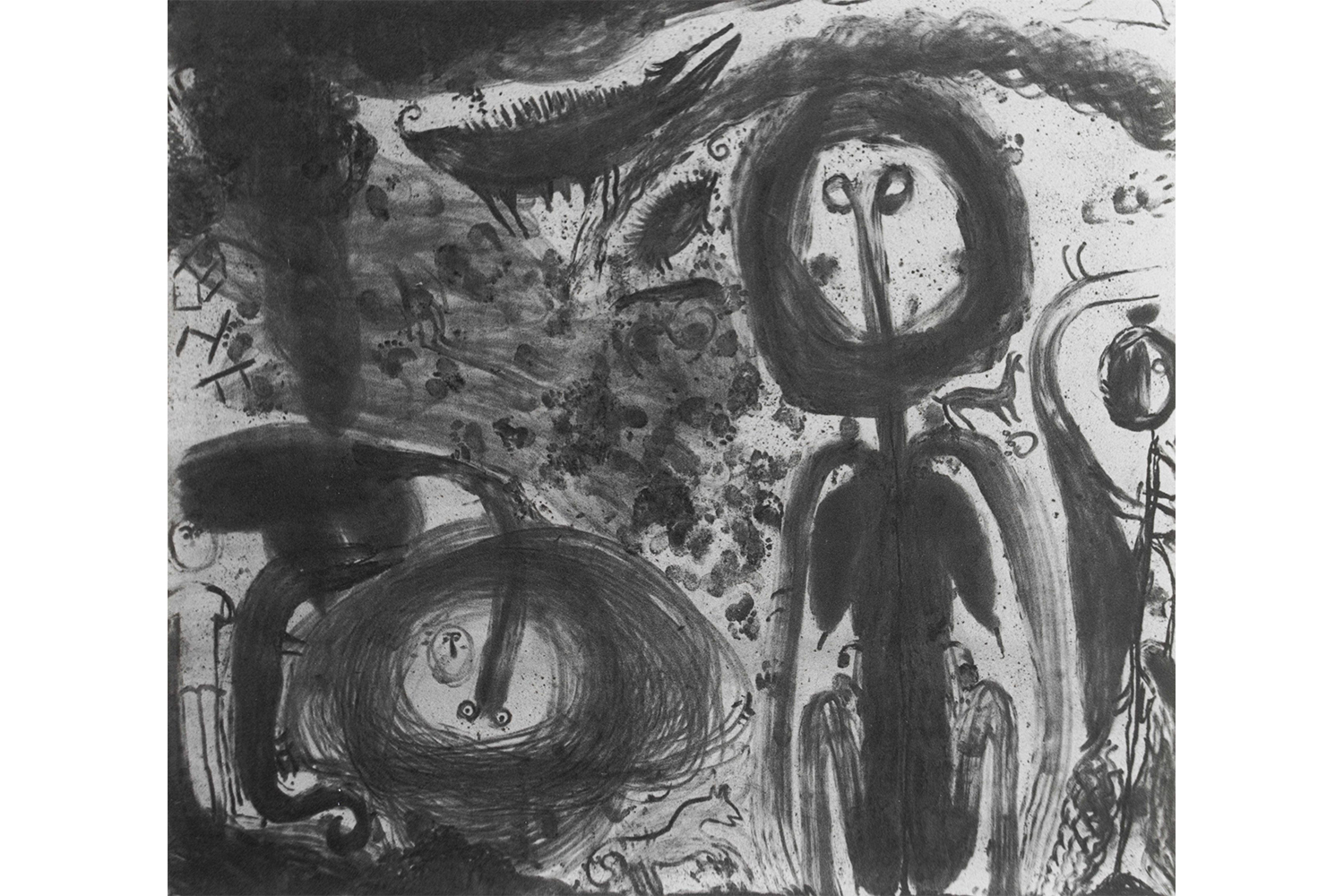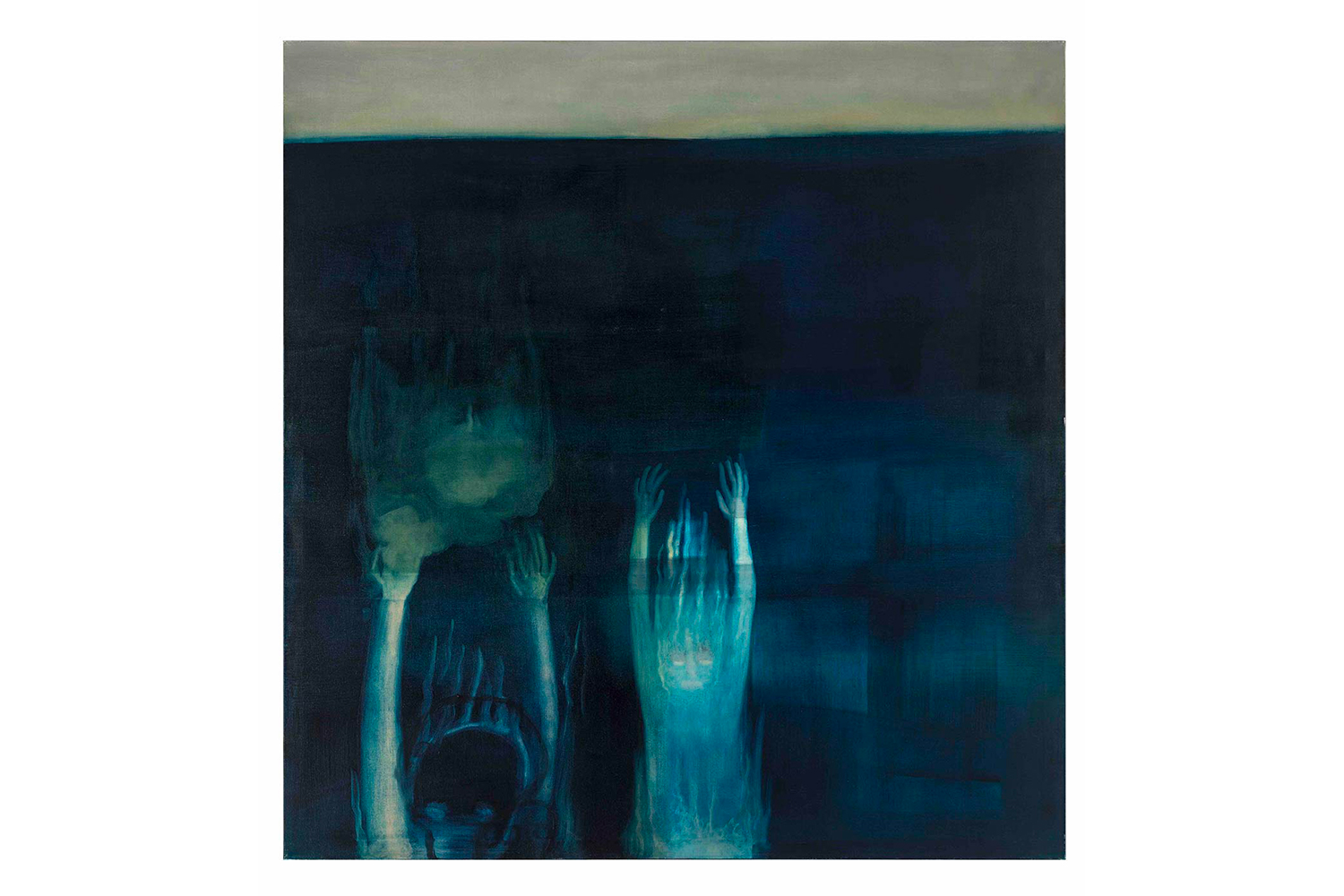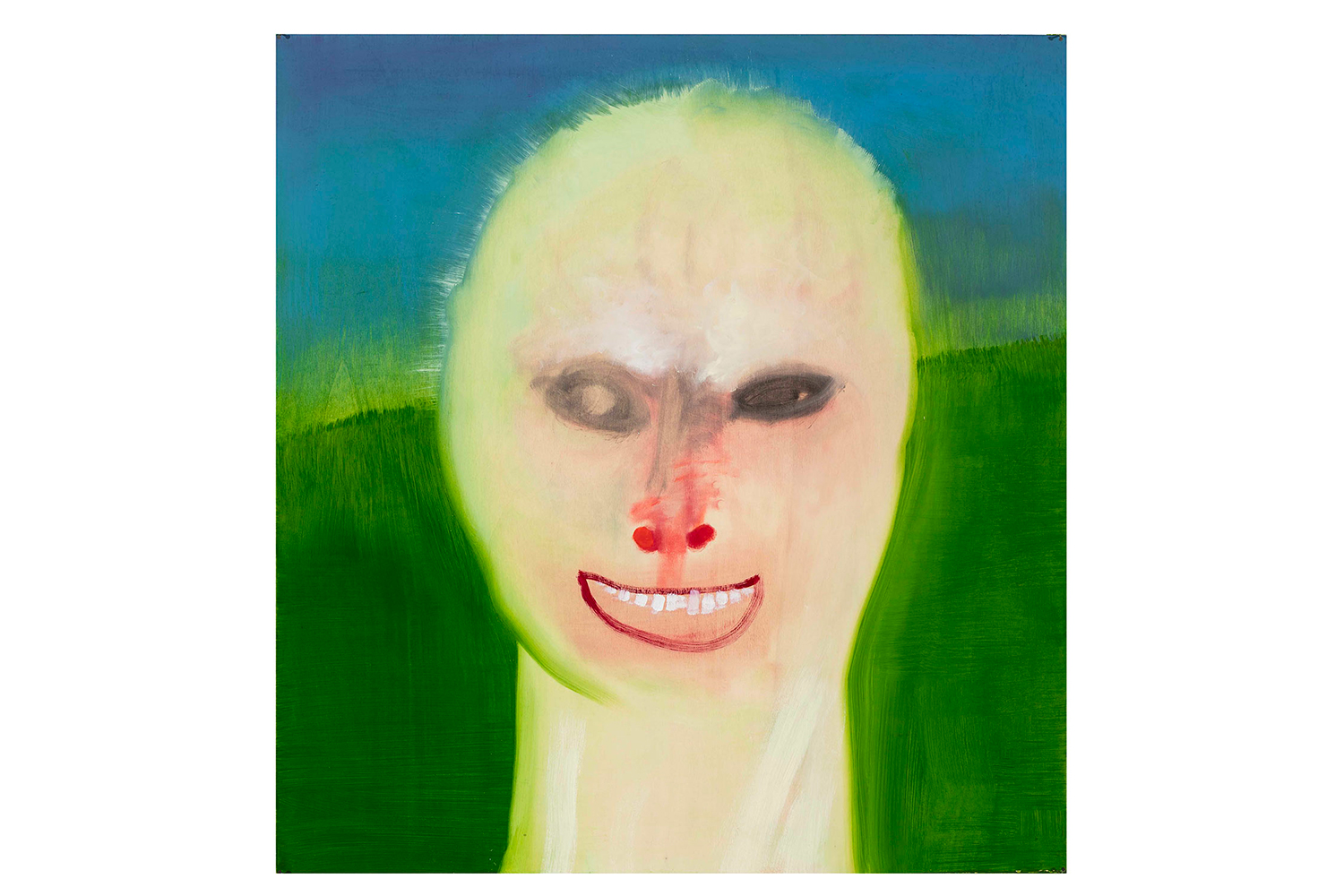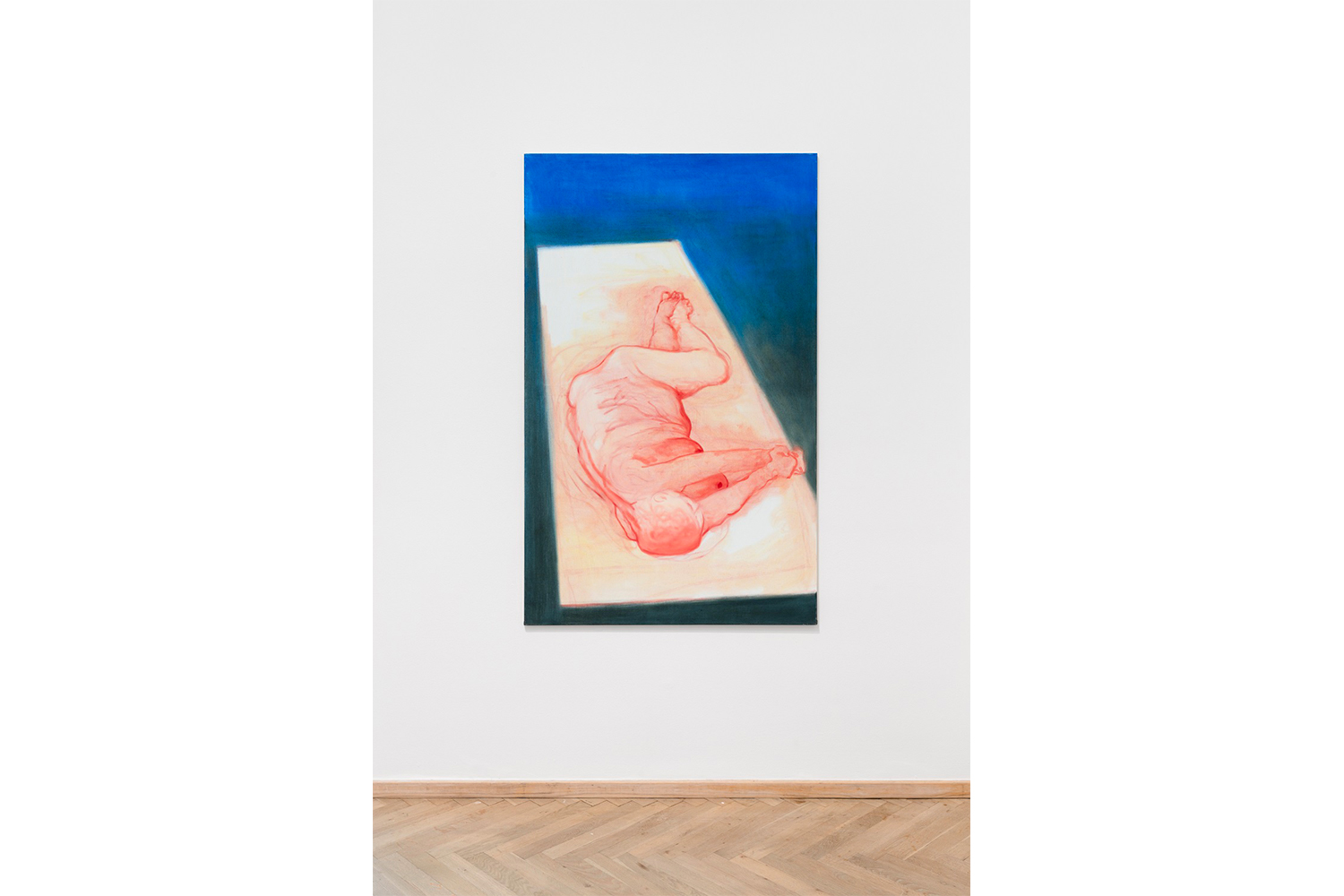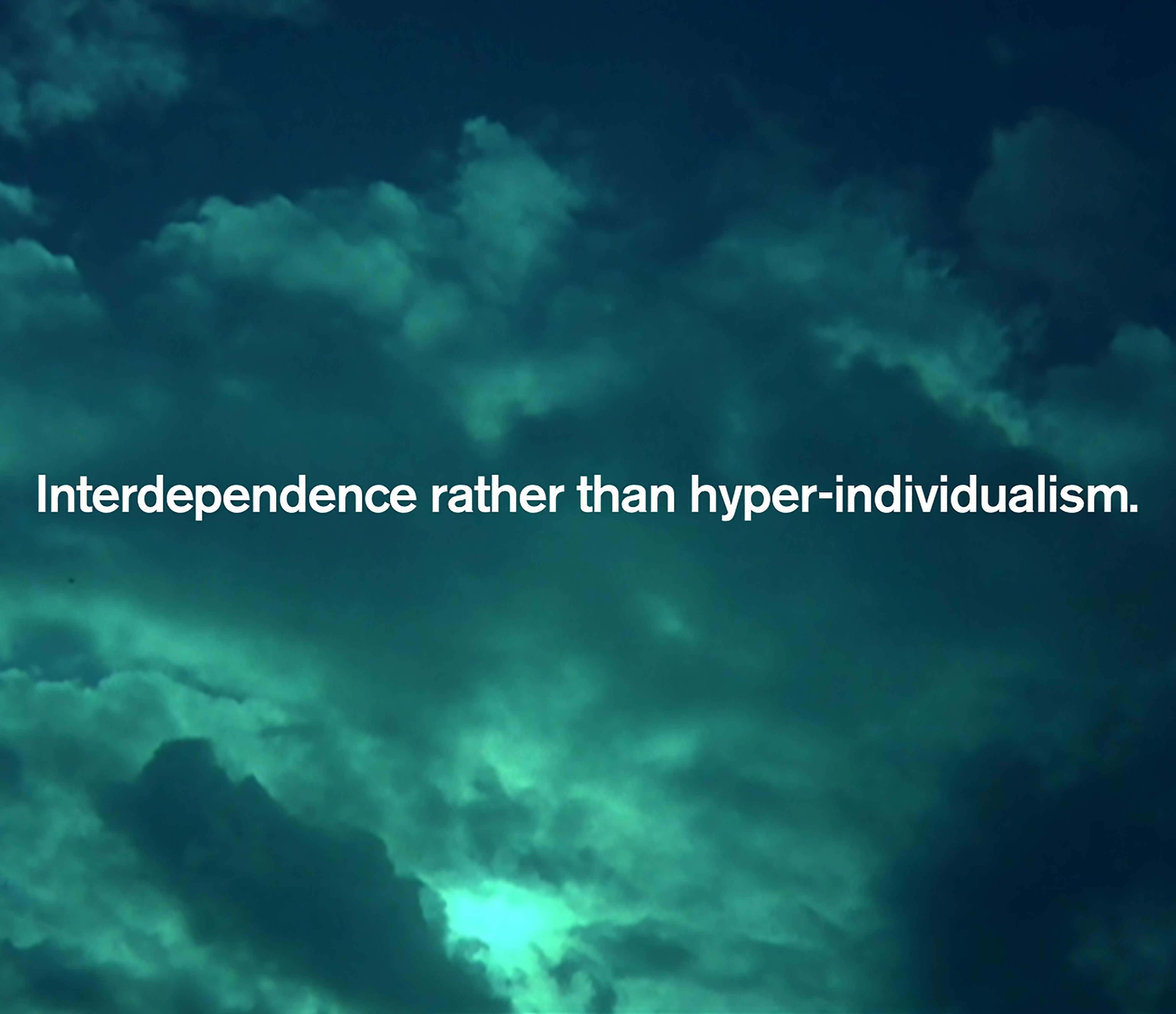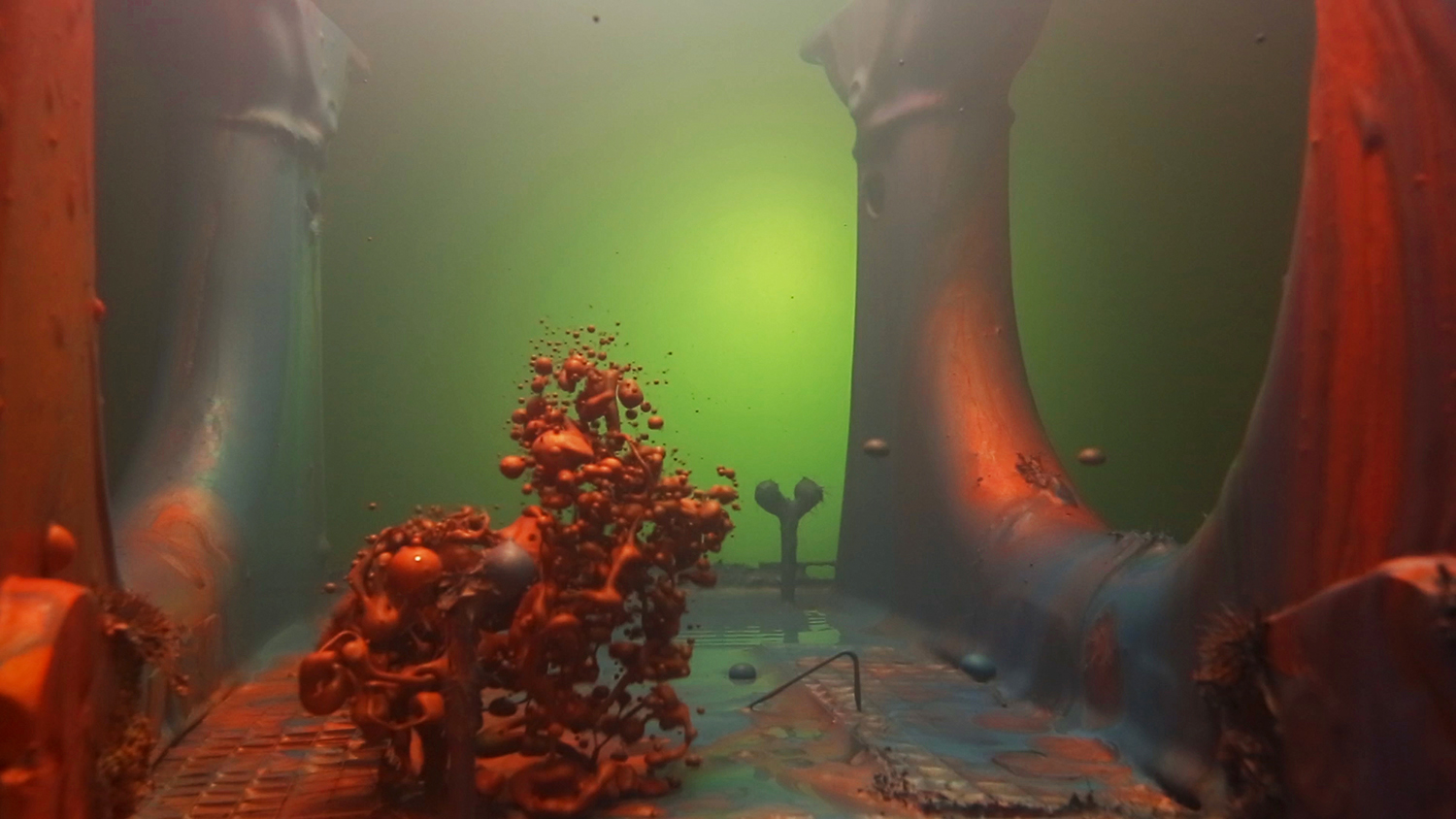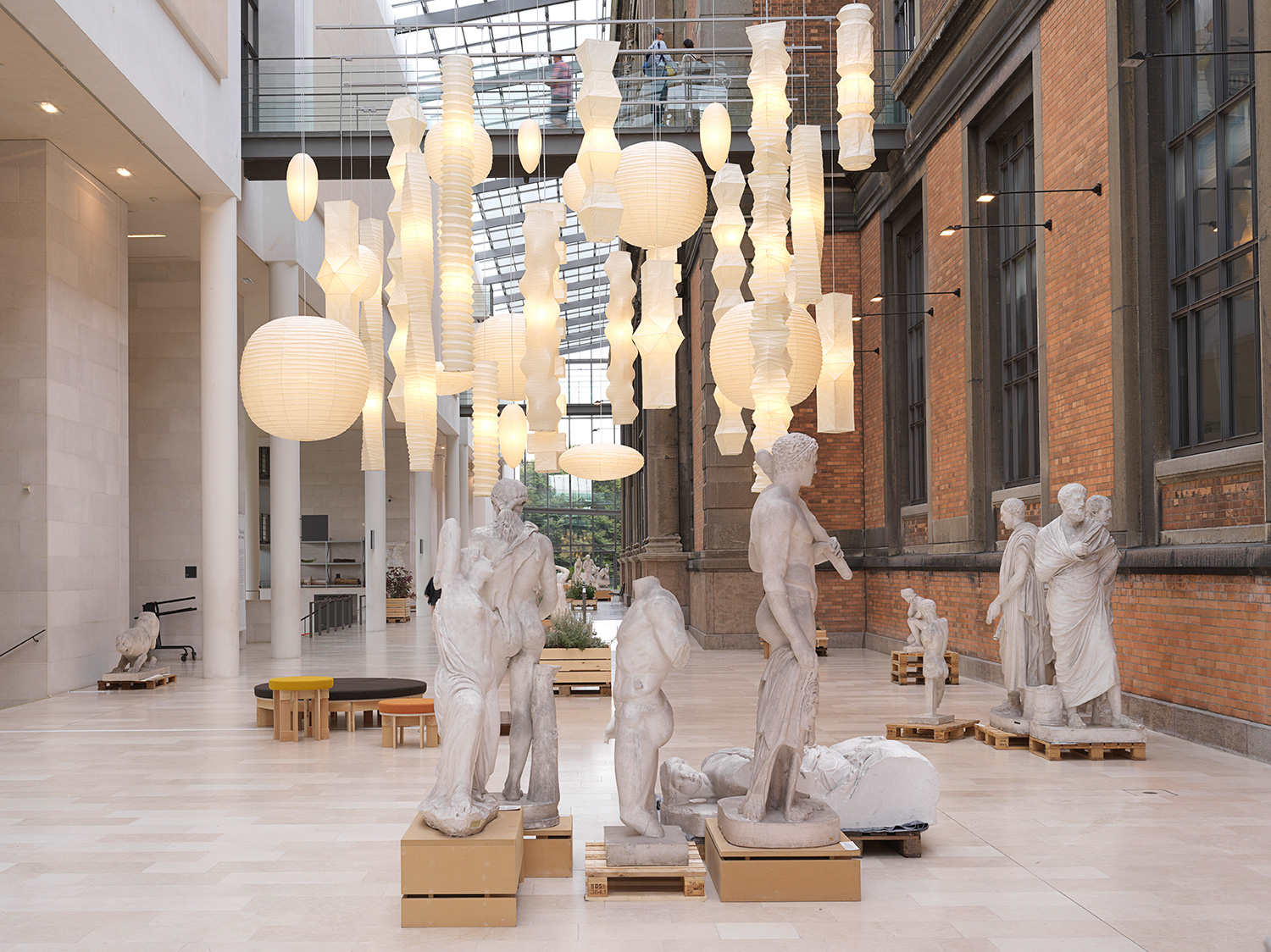Miriam Cahn’s exhibition functions like a story of the self through the history one lives. The title “ME AS HAPPENING” nods equally to the influence on Cahn’s work of women artists who defined their body as a site of political struggle in the 1960s, and to how the artist as a subject and what happens in the world at large are interconnected. The works presented span twenty-five years, their thematic arrangement irrespective of chronological order, instead grouped according to a continuum between the personal and the political as inscribed onto the body. Thus, social themes such as migration, displacement, terrorism, and the events of 9/11 are channeled through the intimate and universally human.
The title also refers to the bodily endeavor of the installation process and Cahn’s physical ability to carry the works around the space herself. Each room has a distinct thematic feel. Charcoal and chalk drawings, photographs, watercolors, oil paintings on board and canvas, and text, are placed at various heights and scales in a dynamic and intuitive arrangement. Drawings are pinned to the wall, their sides irregularly cut; paint is applied to photographs and boards; canvases are frayed, strings dangling from the painting’s edge. Large-scale paintings are punctuated by small works that require the viewer to move closer. The artist equates each work with a note in a musical composition, acquiring sense only through its juxtaposition within a larger scheme.
Cahn’s work is powerful and unapologetic. Paintings and drawings bear a sense of emergency, each stroke vibrant with movement. Portraits often leave facial features eerily indistinct. The acid green background in wesen (2018) spills into the oval shape of a head. Its surface is marked by smudged lineaments, the mouth a red line with no depth, teeth like palisades, two round dots for nostrils, and quickly demarcated black eyes. Schön! (2016) shows a female figure followed by a male holding a child by the hand. Stark naked, stunned, their pink bodies move toward the edge of the picture plane, the contour demarcated against a colorful background, a halo following shortly behind. The green line of the horizon, stained in red and orange hues, seems to tilt forward, pushing them outward toward the viewer. Men, women, children, at times hiding or protecting their genitals, ghostlike and unfinished, eyes hollow or dot-like, present the tragedy of displacement.
The physicality of bodies dominates the work. Fucking, sucking, sleeping, penetrating, fisting, punching, giving birth alone. Charged with eruptive energy, it’s unclear who is the victim or the perpetrator, whether in the idiocy of excitement sex is an act of pleasure or violence or both. While genitals and physical details are in places depicted in graphic detail, facial features are left undefined, often no more than a round flat disk, emoji-like, with deranged and abrasive smiles. In Cahn’s work, women are viewed head-on, their sexuality confrontational and powerful. In Gebären ölkreide (2019), a woman and her newborn child, still exiting the birth canal, are locked in symmetry, her bent arms and legs interlocked, white fists clenched, their heads at opposite ends of what is still one body, the mother’s red in effort, the child’s white in a crimson red pool of blood. Even when seeing the large-scale paintings depicting the landscapes of southern Switzerland, where the artist resides, I cannot help but see veins in the rivers and crevices that run down the mountainsides.
The last room in the exhibition is dedicated to the series “altich” — which translates from German as the composite “old-I.” Like another series in the exhibition, “schlafen,” these paintings are endless explorations of a theme, in this case the artist as an older woman. A full female frame, with large breasts and wide belly, arms outstretched and fists clenched, bears the marks of life, evoking a feeling of acceptance and vulnerability. I return to an image that appears as a reproduction at the beginning of the exhibition, here as an original small oil painting from 1974. A young woman, lips parted, holding a brush whose tip touches the picture plane, is intent on looking at the viewer, positioned as the subject of her painting. This self-referential image of the young painter marks Cahn’s obsession with returning to previous works to establish fresh connections. Such inquiries into the unsteady shifts in meaning that history creates as it moves through one’s experiences and observations make “ME AS HAPPENING” intimately powerful and rewarding to the viewer.

